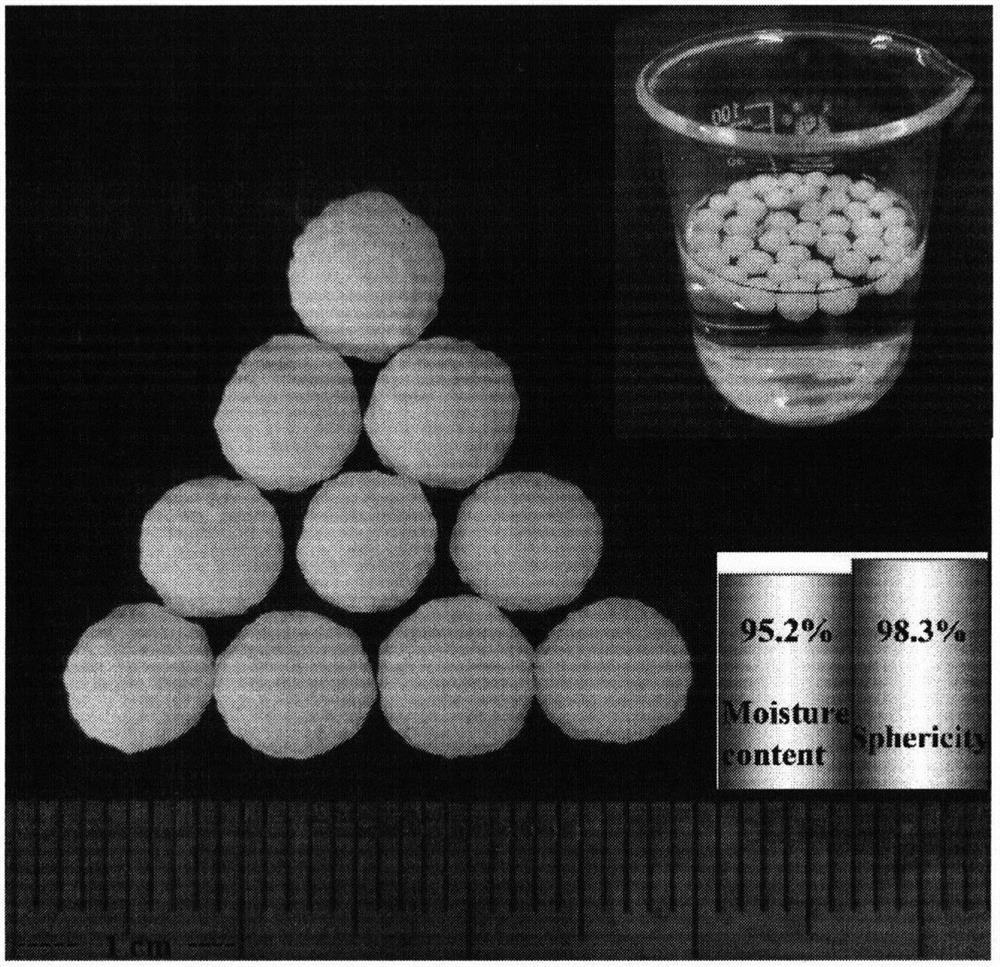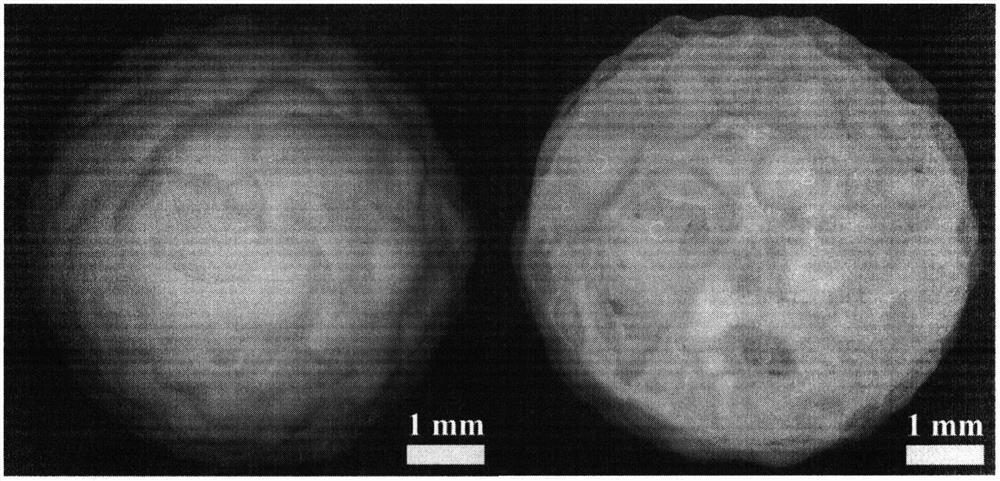High-activity photochromic bismuth oxychloride/calcium alginate photocatalytic hydrogel microbead and preparation method thereof
A technology of hydrogel microbeads and photochromism, applied in chemical instruments and methods, light water/sewage treatment, physical/chemical process catalysts, etc., can solve problems such as difficult recycling, difficult reuse, and large losses. Achieve the effects of good photochromic properties, good spherical shape, and enhanced photocatalytic efficiency
- Summary
- Abstract
- Description
- Claims
- Application Information
AI Technical Summary
Problems solved by technology
Method used
Image
Examples
Embodiment 1
[0022] (1) Preparation of Ca-BOC-SA mixed colloids. 1g of CaCO 3 Dissolve 0.4g of BiOCl powder in deionized water, stir to prepare Ca-BOC mixed suspension after ultrasonic dispersion, then add 0.4g of SA powder into Ca-BOC mixed suspension, stir magnetically for 1h until completely dissolved, and prepare into Ca-BOC-SA mixed colloid.
[0023] (2) Prepare a mixed solution of calcium chloride and glacial acetic acid. Weigh 1g CaCl 2 In a 100mL beaker, add 5mL of deionized water, stir the glass rod until it is completely dissolved, then add 45mL of glacial acetic acid to prepare a mixed solution of calcium chloride and glacial acetic acid with a volume ratio of 9:1.
[0024] (3) To prepare BOC-CA hydrogel, drop the Ca-BOC-SA mixed colloid into the mixed solution of calcium chloride and glacial acetic acid from a height of about 25 cm on the liquid surface with a dropper with a diameter of about 5 cm, and use it after reacting for 2 hours. Soak in deionized water for 48 hours,...
Embodiment 2
[0032] (1) Preparation of Ca-BOC-SA mixed colloids. 1g of CaCO 3 Dissolve 0.06g of BiOCl powder in deionized water, stir after ultrasonic dispersion to prepare Ca-BOC mixed suspension, then add 0.4g of SA powder into Ca-BOC mixed suspension, stir magnetically for 1h until completely dissolved, and prepare into Ca-BOC-SA mixed colloid.
[0033] (2) Prepare a mixed solution of calcium chloride and glacial acetic acid. Weigh 1g CaCl 2 In a 100mL beaker, add 5mL of deionized water, stir the glass rod until it is completely dissolved, then add 45mL of glacial acetic acid to prepare a mixed solution of calcium chloride and glacial acetic acid with a volume ratio of 9:1.
[0034] (3) To prepare BOC-CA hydrogel, drop the Ca-BOC-SA mixed colloid into the mixed solution of calcium chloride and glacial acetic acid from a height of about 25 cm on the liquid surface with a dropper with a diameter of about 5 cm, and use it after reacting for 2 hours. Soak in deionized water for 48 hours...
Embodiment 3
[0038] (1) Preparation of Ca-BOC-SA mixed colloids. 1g of CaCO 3 Dissolve 0.2g of BiOCl powder in deionized water, stir to prepare Ca-BOC mixed suspension after ultrasonic dispersion, then add 0.4g of SA powder into Ca-BOC mixed suspension, stir magnetically for 1h until completely dissolved, and prepare into Ca-BOC-SA mixed colloid.
[0039] (2) Prepare a mixed solution of calcium chloride and glacial acetic acid. Weigh 1g CaCl 2 In a 100mL beaker, add 5mL of deionized water, stir the glass rod until it is completely dissolved, then add 45mL of glacial acetic acid to prepare a mixed solution of calcium chloride and glacial acetic acid with a volume ratio of 9:1.
[0040] (3) To prepare BOC-CA hydrogel, drop the Ca-BOC-SA mixed colloid into the mixed solution of calcium chloride and glacial acetic acid from a height of about 25 cm on the liquid surface with a dropper with a diameter of about 5 cm, and use it after reacting for 2 hours. Soak in deionized water for 48 hours,...
PUM
| Property | Measurement | Unit |
|---|---|---|
| Diameter | aaaaa | aaaaa |
Abstract
Description
Claims
Application Information
 Login to View More
Login to View More - R&D
- Intellectual Property
- Life Sciences
- Materials
- Tech Scout
- Unparalleled Data Quality
- Higher Quality Content
- 60% Fewer Hallucinations
Browse by: Latest US Patents, China's latest patents, Technical Efficacy Thesaurus, Application Domain, Technology Topic, Popular Technical Reports.
© 2025 PatSnap. All rights reserved.Legal|Privacy policy|Modern Slavery Act Transparency Statement|Sitemap|About US| Contact US: help@patsnap.com



